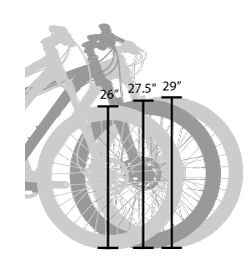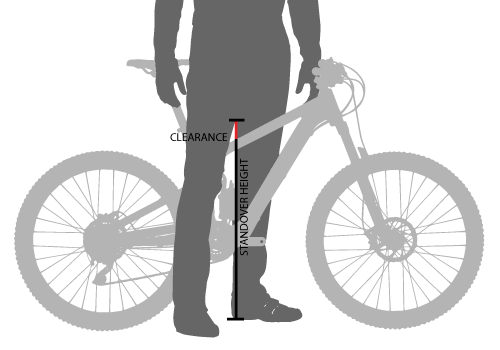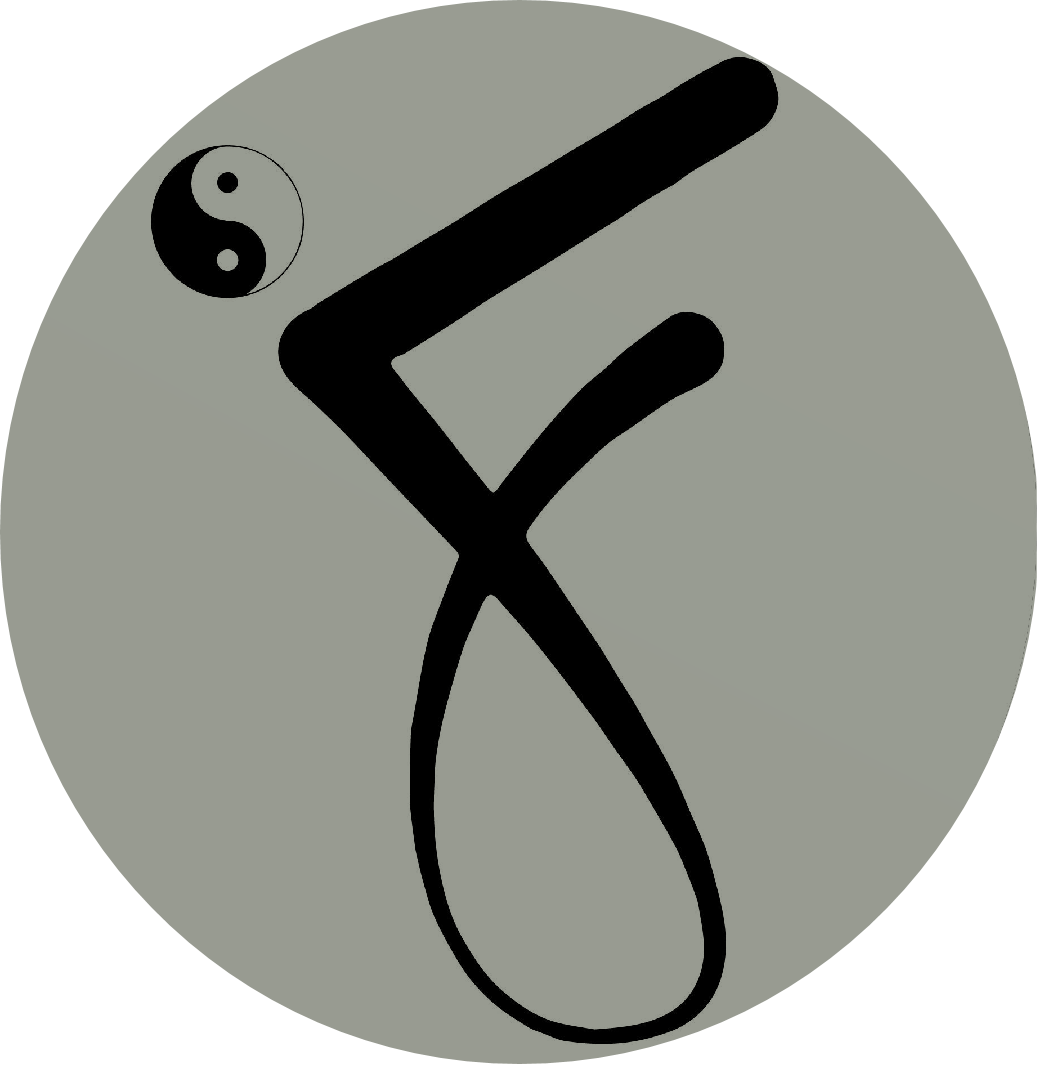Trying to figure out which mountain bike is right for you? Here’s how to approach the question:
Bike style: Different riding styles require different bike styles, so your first consideration is where and how you plan to ride.
Key features: The biggies are suspension, wheel size, frame materials, gearing and brakes.
Fit: Last, but not least, be sure your bike fits you well. You can discuss it with us. We will recommend a suitable frame for you according to your riding habits and useage.
Note: This article covers the basics of mountain bikes. (See below for a brief glossary of terms used in this article.) For a more detailed discussion, talk with YJF by mail or leave message to us.
Mountain Bikes frame
Types of Mountain Bikes
Cross-Country Bikes
This style of riding typically implies riding fast, with an emphasis on climbing prowess. Distances vary from just a few miles to 25-plus, and bikes tend to focus on efficiency and low weight. These bikes can be great if you're considering getting competitive or would like a racier ride for your local trails.
Typical specs: 80–100mm of suspension travel; 70–71° head-tube angle
Cross-Country Bikes
Trail Bikes
This is arguably the most common mountain biking style because the category isn’t grounded in any specific type of racing. If you’re interested in meeting up with friends at the local trailhead and riding a mixture of climbs and descents, then this is the style for you. Bikes in this category place equal emphasis on fun, efficiency and sensible overall weight
Typical specs: 120–140mm of suspension travel; 67–69° head-tube angle
(Suspension travel is the amount of movement offered by the bike’s front and rear suspension. Head-tube angle is the angle that the head tube forms with the ground. A steeper head-tube angle generally indicates that a bike will turn faster and climb better. A slacker (lower) angle generally indicates that a bike will provide better stability at high speeds but won’t climb as well.)
Trail Bikes Carbon Frame
Fat-Tire Bikes
Oversize tires, from 3.7 in. to 5+ in. wide, give these bikes excellent traction, especially in sand or snow. Fat-tire bikes are great for beginners because the wide tires are reassuringly forgiving as a rider picks a line through rough terrain.
Fat-Tire Bikes
All-Mountain Bikes
Think of all-mountain riding as trail riding on steroids, with bigger leg-burning climbs, longer, scarier descents and more technical features—both man-made and natural. Bikes for all-mountain riding are designed to perform well on steep descents while also being light and nimble enough to pedal uphill.
Typical specs:140–170mm of suspension travel; 65–68° head-tube angle
All-Mountain Bikes
Downhill/Park Bikes
Mostly ridden at lift-serviced bike parks. Downhill bikes are big and tough, and riders wear full-face helmets and body armor as they encounter jumps, berms, rock gardens and wooden ladders.
Typical specs: 170–200+mm of suspension travel; 63–65° head-tube angle
Mountain Bike Features
Suspension type and wheel diameter are two key attributes that determine the type of terrain a bike is capable of handling. You'll also want to consider things like frame material, number of gears and type of brakes as you narrow down your bike choice.
Mountain Bike Suspension Types
Hardtail: These bikes have a suspension fork in the front to help absorb impact on the front wheel, but the rear of the bike has no suspension—ergo a hardtail. Hardtails are typically less expensive than full-suspension bikes and have fewer moving parts (which often translates into less maintenance). Most hardtails have the ability to lock out the front fork for times when a fully rigid bike is desired.
Cross-country riders typically gravitate toward hardtails as these bikes allow more direct transfer of power between the pedal stroke and the rear tire. Hardtails can also be at home on all-mountain trails, and the lower cost and easier maintenance make them a solid option for everything except serious lift-serviced downhill trails.
Hardtail Mountain Bikes
Full suspension: There are many variations of full-suspension bikes, but the general idea is for the front fork and rear shock to absorb the impacts of the trail. This drastically reduces the impact on the rider, increases traction, and makes for a more forgiving and enjoyable ride.
A full-suspension bike can soak up a lot of a trail bumps and chatter, but the bike can also "bob" a bit and you lose some of the energy transfer when climbing uphill. As a result, most full-suspension rigs have the ability to lock-out the rear suspension to offer better power transfer and more efficient climbing.
Full-Suspension Mountain Bikes
Mountain Bike Wheel Size
 26 in.: In the not too-distant past, all adult mountain bikes were equipped with 26 in. wheels. It still is an available wheel size, but now when you walk into a bike shop and inquire about mountain bikes, you are likely to be asked, "26 in., 27.5 in. or 29 in.?”
26 in.: In the not too-distant past, all adult mountain bikes were equipped with 26 in. wheels. It still is an available wheel size, but now when you walk into a bike shop and inquire about mountain bikes, you are likely to be asked, "26 in., 27.5 in. or 29 in.?”
27.5 in. (650b): Offering a middle ground between standard 26 in. wheels and 29ers, these bikes apply a "best of both worlds" solution, more easily rolling over terrain than the 26s, but more maneuverable than 29ers. 27.5 in. wheels can be found on both full-suspension and hardtail rigs.
29ers: These bikes feature 29 in. wheels that are a little slower to accelerate, but once you start moving you can conquer considerably more terrain far easier than on a bike with 26 in. wheels. They are more efficient for longer rides as they keep their momentum up and they have a higher “attack angle,” meaning the wheel rolls over trail obstacles easier. These bikes have become extremely popular for the cross-country crowd. 29ers can be found in rigid, hardtail and full-suspension rigs.
27.5+ in.: The plus symbol simply indicates extra-wide wheels and tires, typically 2.8 in. or more in width. Wider tires offer a more comfortable and more forgiving ride. They also encounter less rolling resistance, so the trend is for bikes to have wider wheels and tires these days.
24 in.: Kids' mountain bikes typically have 24 in. wheels to accommodate the shorter legs of children. Most are less-expensive versions of adult bikes with simpler components. Generally speaking, these suit kids ages 10 to 13, but this depends more on the size of the child than the age. Younger/smaller children can get started on mountain bikes with 20 in. wheels.
Mountain Bike Frame Materials
The frame influences a bike's weight, strength, longevity, ride quality and price.
The most commonly used materials are steel, Aluminum alloy, titanium and of caruse carbon fiber.
Advantages and disadvantages of carbon bicycle
Benefits: good shock absorption performance. Carbon fiber can effectively absorb vibration and maintain good rigidity. This feature makes carbon bicycle a good competition grade material. It can make frames of various shapes, which is different from the manufacturing process of general metal frames.
Disadvantages: carbon fiber frame is carbon fiber, characterized by strong tensile strength, but shear strength is weak. Machining requires complicated stress calculation (longitudinal rigidity, transverse rigidity), and carbon fiber sheets are overlapped to form according to calculation. The impact resistance of carbon fiber is quite good, but the puncture resistance is not so vell.
Carbon fiber is fairly common on cross-country bikes, fat-tire bikes, and high-end trail and all-mountain bikes because of its strength and low weight, but it is relatively expensive because it requires labor-intensive manufacturing.
Mountain Bike Fit
 A bike that fits well and is right for your height, flexibility and riding style is a bike you'll love riding. A properly fitting bike can improve your handling and confidence on the trail to help you tackle more technical and challenging rides.
A bike that fits well and is right for your height, flexibility and riding style is a bike you'll love riding. A properly fitting bike can improve your handling and confidence on the trail to help you tackle more technical and challenging rides.
How mountain bikes are sized: Mountain bikes come in standard sizes (S, M, L) and are generally similar across brands. Sizes generally correspond to your height. Many bike manufacturers include size charts that list a height range for each bike size. If you're in-between sizes, it's best to err on the smaller side as more sizing accommodations can be made with a smaller frame than with one that's too large.

 26 in.:
26 in.: A bike that fits well and is right for your height, flexibility and riding style is a bike you'll love riding. A properly fitting bike can improve your handling and confidence on the trail to help you tackle more technical and challenging rides.
A bike that fits well and is right for your height, flexibility and riding style is a bike you'll love riding. A properly fitting bike can improve your handling and confidence on the trail to help you tackle more technical and challenging rides.